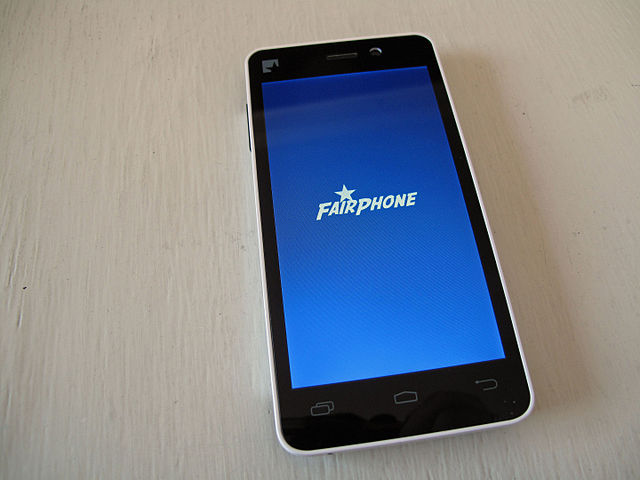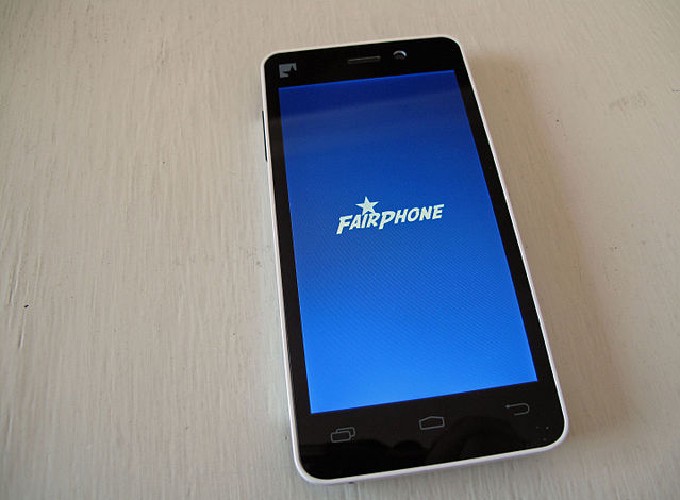In the two years I’ve been having my Fairphone 2 I noticed three kinds of reactions in people:
- “Oh, you have a Fairphone! What is it like?”
- “Oh, you have a Fairphone! I heard they are unstable pieces of junk.”
- “Oh, you have a Fairphone! What the hell is that?”
I’ve explained the concept so many times now, that I decided to write a little post about it. I will explain what the idea behind Fairphone is and give a review of my two years with my Fairphone 2. I hope I can clear up some of the misconceptions that I have seen on the web and elsewhere.
Fairphone the company, Fairphone the phone
In 2013 the company Fairphone was founded in Amsterdam. They set out to tackle some of the problems they identified in the industry: Devices are made to be replaced after 2 years at most and many manufacturers drop support long before. They are often very hard or downright impossible to repair. Many resources are obtained from mines in developing countries - many of which are war zones - where workers have to suffer bad working conditions and we have all heard the stories from Chinese factory conditions.
Fairphone have so far come out with two products, the Fairphone 1 or Fairphone First Edition and the Fairphone 2. The Fairphone 1 came out in 2013 and was not an original design but rather a licensed version of an existing phone. With it Fairphone hoped to establish themselves on the market while starting to implement their ethical business model. However in 2017 after only three and a half years a post was made to the Fairphone forums in which the company announced that they would end support for the phone. After disagreements with the suppliers they were unable to obtain spare parts and the source code needed to provide further Android updates, which meant users would not be able to upgrade past 4.2.2 Jelly Bean. Many customers were quite dissatisfied with this outcome - understandably so, since the phone was advertised as being a long term investment.

Fairphone First Edition (Photo: Sandra Fauconnier CC-BY 3.0)
Fairphone had meanwhile focused on the development of a new phone, the Fairphone 2. Unlike it’s predecessor, this device which came out in 2015 was an original Fairphone design. It is a modular design built with repairability in mind: The screen and battery can both be replaced in seconds without tools. Three more modules (top, camera, bottom) containing speakers, cameras, connectors, etc. can also easily be replaced using only a screwdriver. Because of this, the Fairphone 2 was the first phone ever to receive a 10⁄10 rating on iFixit.com.

Fairphone 2 (Photo: Fairphone CC-BY-SA 2.0)

A Fairphone employee meeting tungsten miners at the New Bugurama Mining Company in Rwanda. (Photo: Fairphone CC BY-SA 2.0)
Better Working Conditions
Like most manufacturers Fairphone produce their devices in China, a country notorious for it’s low standard for worker’s social and physical safety. After a selection process during which Fairphone representatives visited several potential partners in China, it became clear that it was not easy to find the future production halls for the ethical smart phone. For many companies Fairphones orders where just not big enough to be interesting to them, others were not willing to cooperate with the companies plans to improve the working conditions. Eventually a suitable company was found and a worker welfare fund was established. Co-financed by Fairphone and the producing company this fund is used to finance things like training, leisure activities or wage increase. Workers elect representatives who have a say in the use of the fund.
Long-Lasting Design
Ok, we’ve already established that it didn’t go well with the FP1, but what about the Fairphone 2? I’ve already touched on the repairability: Everything is easily replaceable. Last year Fairphone came out with updated camera modules. For only 80€ customers were able to replace both cameras with double the mega-pixels. Software wise Fairphone provide two different Android versions: “Fairphone OS”, an only slightly modified version of Android with Google services preinstalled and “Fairphone Open”, a verison of Android build from the open source version of Android, without Google services. Both are currently at Android 6. There is also a version of LineageOS for the FP2, which kicks you up to Android 7. This version is not officially supported by Fairphone.
One aspect I really like about Faiphone is security: I get at least one OS update a month containing all the latest security fixes for Android. I don’t know for how many other phones this is true.
Personal Experience
After two years with my Fairphone 2 I can say I’m quite happy with it. I actually had two parts replaced after they malfunctioned, including the screen. Both were replaced by Fairphone free of charge. The original cameras were quite mediocre in quality and the new ones are now good enough that I often don’t take a dedicated camera with me on trips. The battery lasts for about a day depending on how much it is used - pretty standard for most phones. Even after two years the processing power is enough for every use case I have so far encountered. The dual-SIM option is a nice feature to have when traveling abroad.
All in all it’s a great device for everyday use and I would still recommend it.
